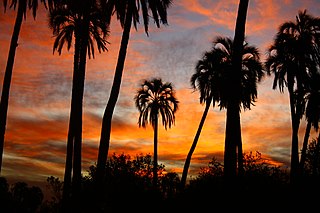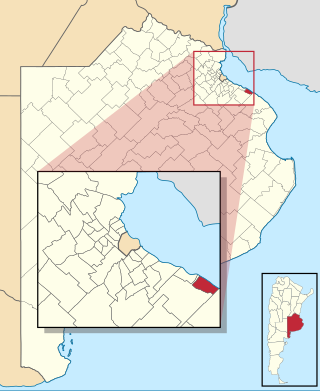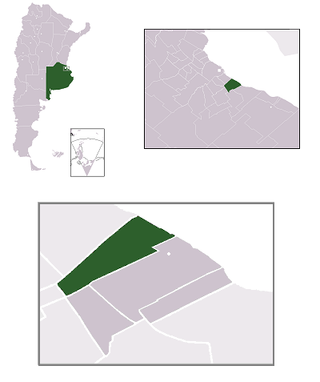This article needs additional citations for verification .(August 2024) |
 |
|---|
Argentina has the following types of country subdivisions:
This article needs additional citations for verification .(August 2024) |
 |
|---|
Argentina has the following types of country subdivisions:

Argentina is divided into twenty-three federated states called provinces and one called the autonomous city of Buenos Aires, which is the federal capital of the republic as decided by the Argentine Congress. The provinces and the capital have their own constitutions and exist under a federal system.

Buenos Aires, officially the Buenos Aires Province, is the largest and most populous Argentine province. It takes its name from the city of Buenos Aires, the capital of the country, which used to be part of the province and the province's capital until it was federalized in 1880. Since then, in spite of bearing the same name, the province does not include Buenos Aires city, though it does include all other parts of the Greater Buenos Aires metropolitan area. The capital of the province is the city of La Plata, founded in 1882.

Entre Ríos is a central province of Argentina, located in the Mesopotamia region. It borders the provinces of Buenos Aires (south), Corrientes (north) and Santa Fe (west), and Uruguay in the east.

Santiago del Estero, also known simply as Santiago, is a province in the north of Argentina. Neighboring provinces, clockwise from the north, are Salta, Chaco, Santa Fe, Córdoba, Catamarca and Tucumán.

San Luis is a province of Argentina located near the geographical center of the country. Neighboring provinces are, from the north clockwise, La Rioja, Córdoba, La Pampa, Mendoza and San Juan.
The city of Buenos Aires is formally divided in 48 barrios (neighborhoods), grouped into 15 comunas (communes), which are defined as "units of decentralized political and administrative management governed by designated residents".

Belgrano is a northern and leafy barrio or neighborhood of Buenos Aires, Argentina.

Hermes Juan Binner was an Argentine physician and politician who served as Governor of Santa Fe from 2007 to 2011. Binner was the first Socialist to serve as governor of an Argentine province, and the first non-Peronist to rule Santa Fe since the last transition to democracy in 1983.

A partido is the second-level administrative subdivision only in the province of Buenos Aires, Argentina. They are formally considered to be a single administrative unit, usually contain one or more population centers, and are divided into localidades. The subdivision in partidos in Buenos Aires Province is distinct from all other provinces of Argentina, which call their second-level subdivisions departamento and are further subdivided into distinct municipalities.

Retiro is a barrio or neighborhood in Buenos Aires, Argentina. Located in the northeast end of the city, Retiro is bordered on the south by the Puerto Madero and San Nicolás, and on the west by the Recoleta.

Parque Patricios is a barrio located on the southern side of Buenos Aires, Argentina belonging to the fourth comuna.

Berisso Partido is a small eastern partido of Buenos Aires Province in Argentina.

Cañuelas Partido is a partido of Buenos Aires Province in Argentina. It has a population of 42,575 in an area of 1,200 km2 (460 sq mi), and its administrative centre is Cañuelas, which has a population of around 24,380.

Villa Lugano is a barrio (neighbourhood) in Buenos Aires, Argentina, located in the south of the city. It has a population of approximately 114,000 people. It is delimited by Avenida Eva Perón, Avenida General Paz, Calle José Barros Pazos, Avenida Lisandro de la Torre, Avenida Coronel Roca and Avenida Escalada. To the south-east it limits with La Matanza Partido.

Bernal is a city located in the northeast of Quilmes in the province of Buenos Aires, approximately 10 miles south of the city of Buenos Aires. It is the second largest and most populated city in the Partido of Quilmes. Bernal borders Avellaneda Partido and Lanús Partido to the north-west, the city of Quilmes to the south-east, Almirante Brown Partido and Lomas de Zamora Partido to the south-west the Río de la Plata to the north-east.

National Route 1, also known as Buenos Aires–La Plata Highway and officially called Autopista Doctor Ricardo Balbín since 2004, is a highway that connects the 25 de Mayo Highway and Paseo del Bajo in the city of Buenos Aires with the Provincial Route 11, near the city of La Plata. It has a length of 50 km (31 mi) with two or four lanes on each direction in different areas, and is indicated in red in the map.

The city of Buenos Aires is administratively divided into fifteen comunas, unlike the Province of Buenos Aires, which is subdivided into partidos, or the rest of Argentina, in which the second-order administrative division is departamentos. Each comuna encompasses one or more neighbourhoods (barrios), which are represented in the respective community centres for administrative purposes.

Federico Fagioli is an Argentine social activist and politician of the Patria Grande Front. Since 2023, he has been a member of the Senate of Buenos Aires Province, representing the Third Electoral Section. From 2019 to 2023, he was a National Deputy for Buenos Aires.

Mónica Fernanda Macha is an Argentine politician, currently serving as National Deputy representing Buenos Aires Province. A member of New Encounter, Macha was elected in 2017 for the Unidad Ciudadana coalition, and currently sits in the Frente de Todos bloc. She previously served as a member of the Provincial Senate of Buenos Aires Province.

José Luis Cantilo was an Argentine diplomat and politician of the Radical Civic Union. He served both as intendente (mayor) of the City of Buenos Aires and as governor of Buenos Aires Province during the 1920s. From 1936 to 1941, he also served as a National Deputy and as President of the Chamber of Deputies.